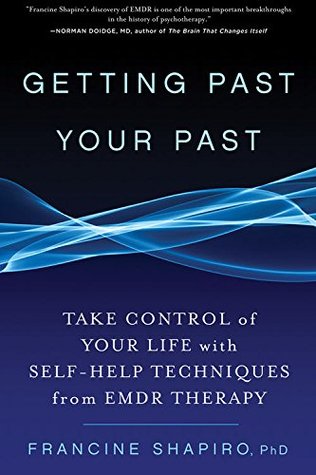More on this book
Community
Kindle Notes & Highlights
But when we continue to have pain long after the experience itself has passed, it is because the hardwiring of our brains influences our minds.
But it came up automatically nonetheless. These types of automatic responses can be wonderful and useful, and show the power of our minds, but they don’t always serve us.
But as we all know, while sugar is surely sweet, people are lots more complicated. Everyone is a mixture of sweet, sour and every flavor and variation under the sun. At some point, everyone is angry, sad, jealous, bitter, hurt, insecure, happy or sweet.
Every experience we’ve had in our lives has become a building block in our inner world, governing our reactions to everything and every person we encounter.
when negative reactions and behaviors in the present can be tracked directly back to an earlier memory, we define those memories as “unprocessed”—meaning that they are stored in the brain in a way that still holds the emotions, physical sensations and beliefs that were experienced earlier in life.
But identifying the memory connections is just the first step in changing how we think, act or feel. It’s not just understanding where something comes from, but also knowing what to do about it that’s important.
EMDR therapy targets the unprocessed memories that contain the negative emotions, sensations and beliefs. By activating the brain’s information processing system (which will be explained in Chapter 2), the old memories can then be “digested.” Meaning what is useful is learned, what’s useless is discarded, and the memory is now stored in a way that is no longer damaging.
Likewise, the kinds of experiences we have encountered range from the usual ones of childhood humiliations, failures, rejection and arguments to the major events needed to diagnose posttraumatic stress disorder (PTSD), such as major accidents, physical, sexual or emotional abuse, combat, or natural disasters. In addition, for someone to be diagnosed with PTSD, they have to have symptoms such as intrusive thoughts, sleep disturbances such as nightmares or recurrent dreams, anxiety, “hyperarousal” where they are extremely alert for danger and may jump at loud noises, or “numbing” where they feel
...more
When they think of the incident, it can feel as though it’s happening all over again, or they can be fearful and anxious when around certain people or places. But regardless of how long ago something happened, and regardless of how long symptoms have been there, it doesn’t need to be permanent.
It’s important to remember that we don’t have to undergo a major trauma such as a father’s death or a car accident to develop symptoms that last for years.
Awareness of anything in the outside world comes through our senses (sight, smell, touch, hearing, taste) into working memory.
Sadly, disturbing experiences, whether major traumas or other kinds of upsetting events, can overwhelm the system. When that happens, the intense emotional and physical disturbance caused by the situation prevents the information processing system from making the internal connections needed to take it to a resolution. Instead, the memory of the situation becomes stored in the brain as you experienced it. What you saw and felt, the image, the emotions, the physical sensations and the thoughts become
The disrupted information processing system has stored the memory in isolation—unintegrated within the more general memory networks. It can’t change since it is unable to link up with anything more useful and adaptive. That’s why time doesn’t heal all wounds, and you may still feel anger, resentment, pain, sorrow or a number of other emotions about events that took place years ago. They are
frozen in time, and the unprocessed memories can become the foundation for emotional, and sometimes physical, problems. Even though you might not have had a major trauma in your life, research has shown that other kinds of life experiences can cause the same types of problems. And since the memory connections happen automatically, below conscious level, you may have no idea what’s really running your show.
Changing the memories that form the way we see ourselves also changes the way we view others. Therefore,
our relationships, job performance, what we are willing to do or are able to resist, all move in a positive direction.
research has established that the memory control center of the brain (the hippocampus) shrinks in people with PTSD.
The nightmare is simply your brain trying to process the information.
The client is not asked to describe the memory in detail or do homework. Instead, the clinician accesses the disturbing memory, jump-starts the brain’s information processing system, guides the procedures and monitors the effects.
Research with trauma victims has found that EMDR is able to eliminate symptoms without the homework needed in other therapies.
Anxiety can be a catchall for many emotions that are under the surface.
For all of us, unprocessed memories are generally the basis of negative responses, attitudes and behaviors. Processed memories, on the other hand, are the basis of adaptive positive responses, attitudes and behaviors.
The brain automatically makes associations in relation to everything we do, think, feel.
Our task is to recognize when we have thoughts, emotions or physical responses that are destructive, negative or harmful—and then do something about it.
The bottom line is that it doesn’t matter who you are; our physiologically stored memories are the basis of our current perceptions of the present. Unprocessed memories not only can intensify our sensations and emotional responses, they can also prevent us from feeling.
“Working through” means to talk about the experience and reexperience it in the “transference” (transferring the feelings of childhood to the current relationship) with the therapist.


